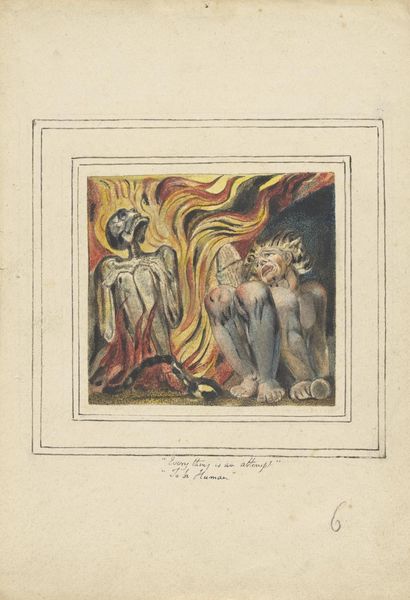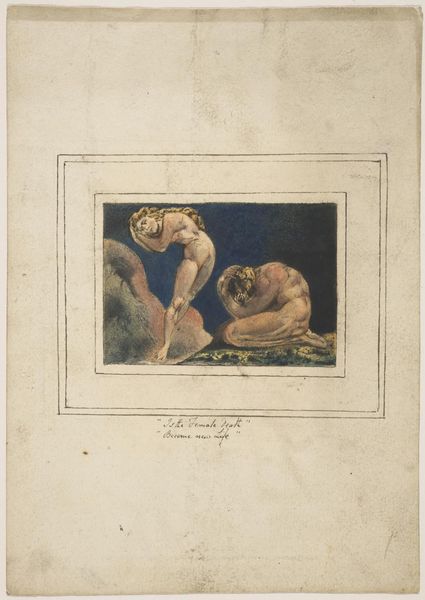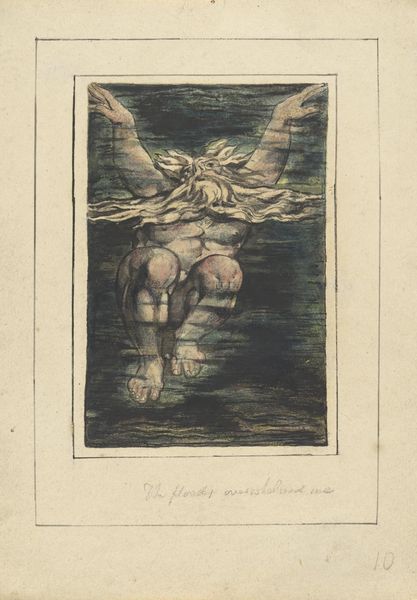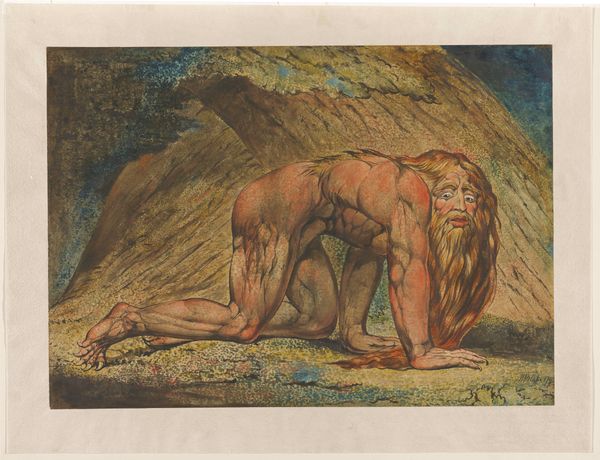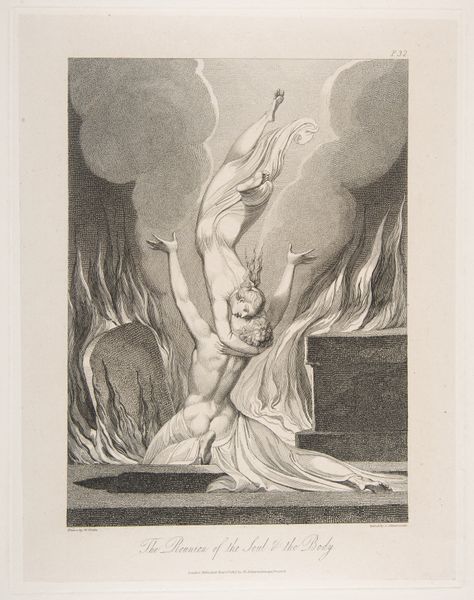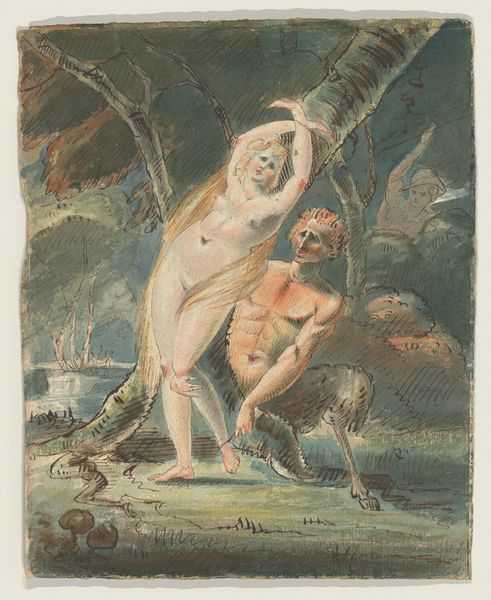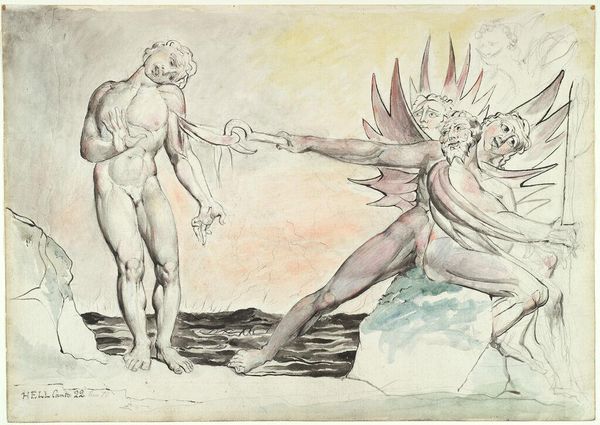
Dimensions: support: 250 x 187 mm
Copyright: NaN
Editor: This is William Blake's "First Book of Urizen pl. 6," currently at the Tate. The figure seems trapped, almost self-imprisoned. How do you interpret the material execution of this piece? Curator: Consider Blake's engraving process itself. The labor-intensive method mirrors Urizen's self-imposed constraints. The stark contrasts and visible lines highlight a tension between the physical act of creation and the depicted subject's mental anguish, doesn't it? Editor: That's insightful. I hadn't considered how the artistic process echoes the themes in the work. Curator: Blake's choice of materials is deliberate, highlighting the societal move from illuminated manuscripts to mass-produced print. The materiality emphasizes the loss of uniqueness, mirroring Urizen's rigid laws against imagination.
Comments
tatebritain 3 months ago
⋮
http://www.tate.org.uk/art/artworks/blake-first-book-of-urizen-pl-6-t13002
Join the conversation
Join millions of artists and users on Artera today and experience the ultimate creative platform.
tatebritain 3 months ago
⋮
In Blake’s personal mythology the figure of Los represents creativity and inspiration. Here, Los is depicted as a contorted figure, crying out in agony and wreathed in flames. This image originally appeared in Blake’s First Book of Urizen (1794), which re-imagines the Christian creation story. It was accompanied by the lines: ‘Los howld in a dismal stupor. Groaning! gnashing! groaning!’. Blake later reprinted this and other images from his illuminated books without text, opening them up to wider interpretation. Blake added new text to this image: ‘I sought Pleasure x found Pain’ and ‘Unutterable’. Gallery label, June 2024
